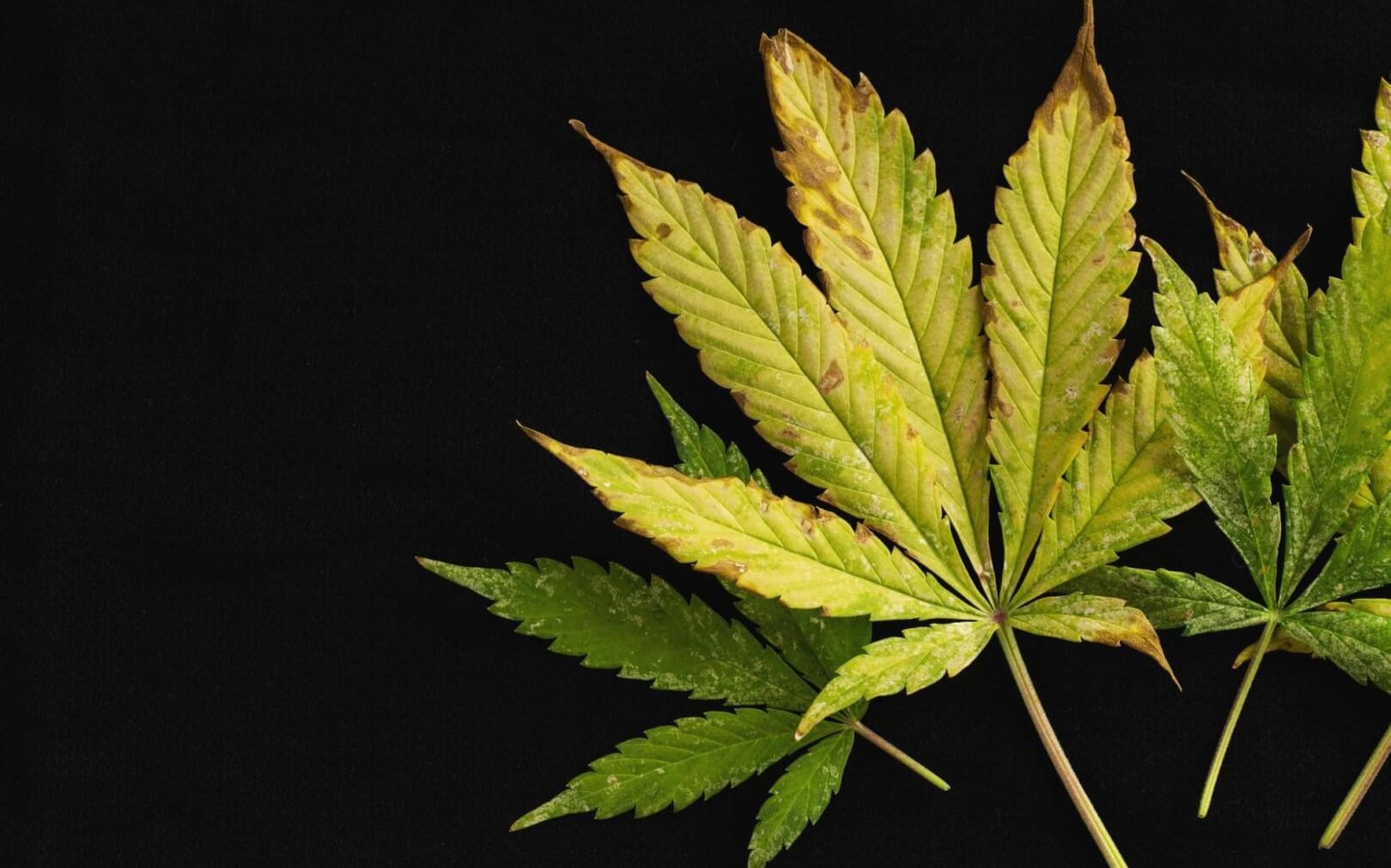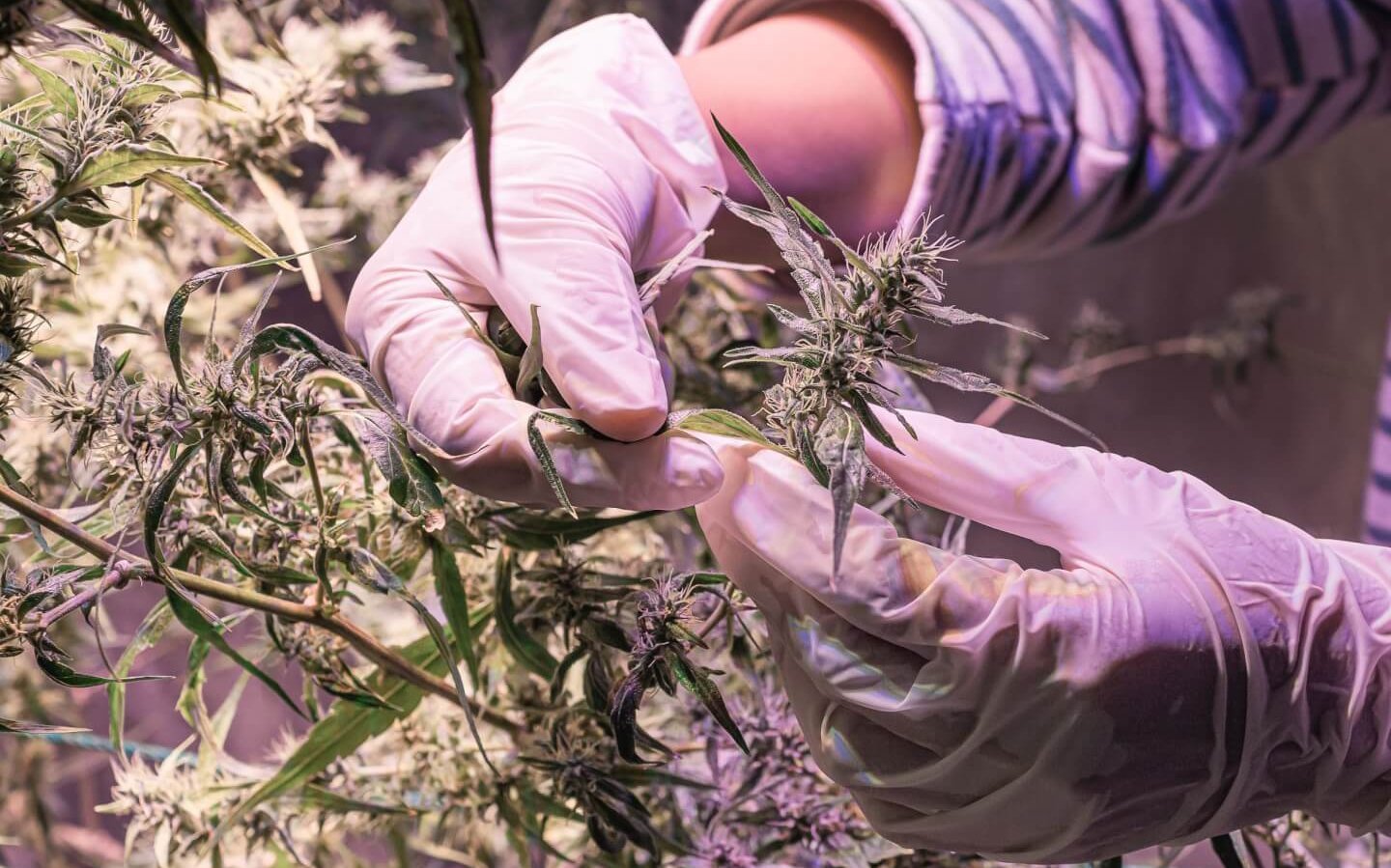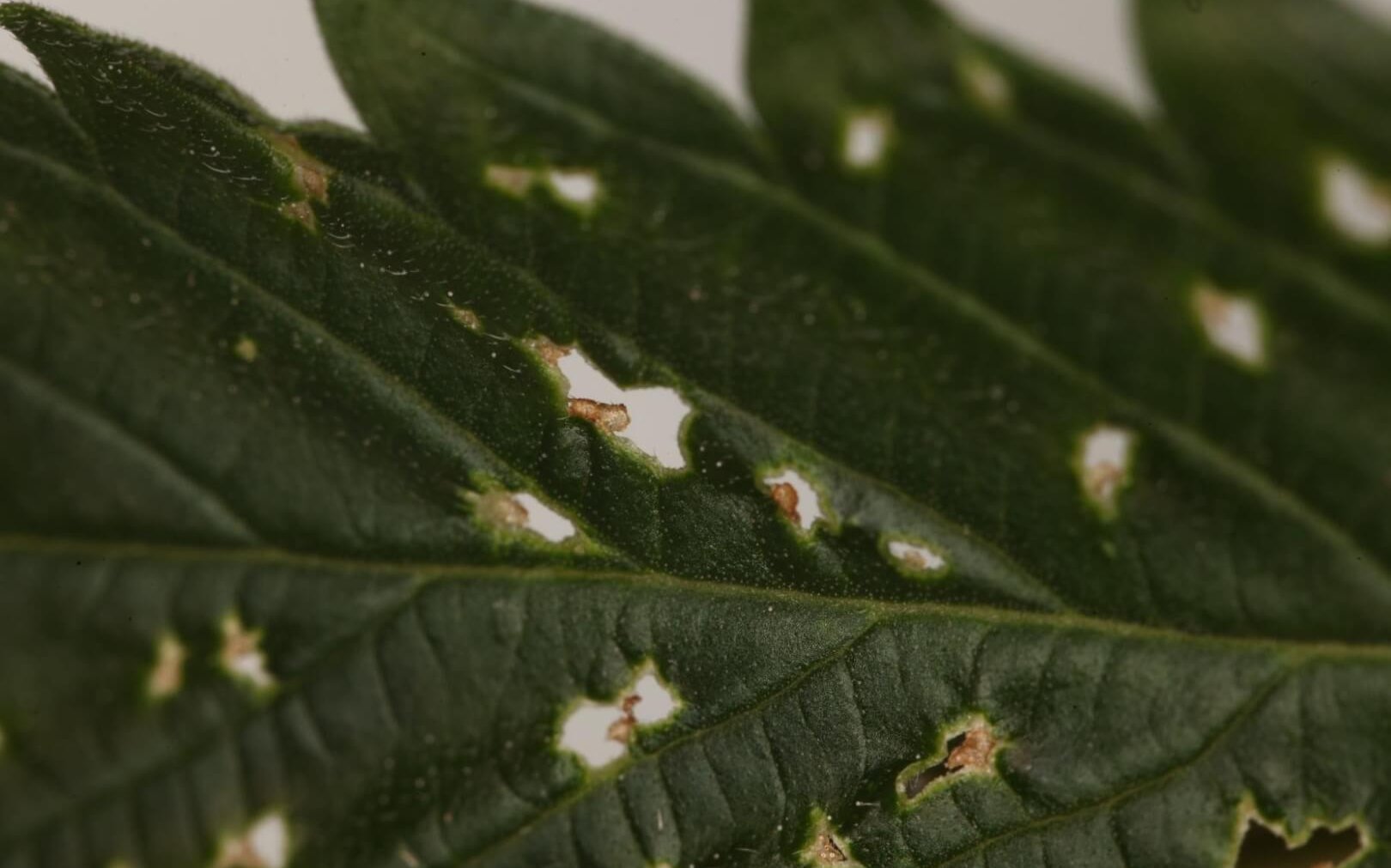Brown Spots on Weed Leaves: Causes and Solutions
Brown spots on weed leaves are never good news. Why do they occur, and what can you do about them?
Unfortunately, most plant health issues manifest as foliage discoloration. It takes know-how to diagnose, troubleshoot, and nurse your crops back to health.
Join us for a complete overview of spots on cannabis leaves. We’ll discuss why they occur, how to gauge what you’re dealing with, and ways to restore the greenery.
Causes of brown spots on cannabis leaves
Marijuana leaves are complex structures with multiple responsibilities in the plant life cycle. They produce, move, and store nutrients for growth, playing the role of the lungs, heart, and stomach of a cannabis crop.
They’re also the first line of defense against stressors—and the first to show signs of trouble.
Brown spots on pot leaves are a common complication. They aren’t fatal if you act quickly and efficiently, but you must determine the root cause first.
Pinpointing the reason behind dark spots on cannabis leaves is the hardest part of getting your garden back on track. Here’s an overview of potential culprits, complete with practical tips for tackling each.

Nutrient deficiencies
Cannabis nutrient deficiency happens when plants don’t get the necessary minerals from their surroundings. It occurs due to scarce feedings and a nutrient lockout.
A lack of nutes weakens the vegetative structure and can result in crop death in the worst-case scenario. Brown spots on cannabis leaves are among the main symptoms of a deficiency, especially when the following four elements are lacking.
Calcium deficiency
Calcium is central to nutrient absorption and healthy new growth in all life stages of cannabis. This deficiency is the leading cause of brown spots on weed leaves.
Besides dark spots on cannabis leaves, a calcium deficiency presents as:
- Slower flowering
- Foliage wilting
- Curled leaf tips
- Hollow and soft stems
- Short and dry roots
- Small leaves and buds
Leaves in direct light are usually most affected, helping you differentiate a calcium shortage from a bug or pest infestation.
Solution: Luckily, learning how to fix cannabis calcium deficiency isn’t hard. Supplementing with a natural mineral source and correcting your pH levels does the trick.
Nitrogen deficiency
Nitrogen is an essential macronutrient for weed, meaning that plants need it in large quantities. Nitrogen deficiency in cannabis can cause wilting and stunted vegetative growth.
Cannabis yellow leaves with brown spots indicate a nitrogen scarcity, as do the following symptoms:
- Discoloration of older foliage
- Brown and purple stems
- Drooping and wilting leaves
This predicament affects older growth first, exhibiting brown spots on lower fan leaves. It only attacks new foliage and branches at later stages.
Solution: Use rich soil, check your pH levels, avoid overwatering, and supply an extra dose of nitrogen until the crop’s healthy again.
Potassium deficiency
Potassium is another essential nutrient—it’s indispensable for the blooming stage. It strengthens leaves and stems and encourages bud production. Potassium deficiency in cannabis weakens its structural integrity and reduces yield potential.
Brown spots on fan leaves during flowering hint at a potassium shortage; other signs include:
- Pale and discolored foliage
- Stunted and abnormal growth
- Leaves curling upward
- Overstretched stems
- Thin and weak colas
The foliage is the first to go, but branches and buds may display the impact down the line. While growth doesn’t cease, it’s less vigorous in affected specimens.
Solution: The cure is once again a matter of checking the pH and soil. Once you know you’re not facing a lockout, provide a rich potassium supply.

Boron deficiency
Boron is a supporting nutrient, enabling the crop to use other minerals for growth. Boron deficiencies are relatively rare, mostly occurring in dry and acidic environments.
This issue appears on the foliage, inducing dark spots on weed leaves and slower growth. When taken to an extreme, a lack of boron causes blades to curl and drop off. Other warning signs include:
- Burnt and scorched new growth
- Wilting or cupping leaves
- Hollow and rough stems
- Unhealthy root development
Solution: Check the air humidity and increase the watering frequency to resolve this deficiency. It’s more effective than providing additional boron.
Low pH levels
You might’ve noticed that pH relates to deficiencies causing brown spots on pot leaves. That’s because acidity influences nutrient uptake.
Marijuana can only absorb its food at a specific pH range:
- 5.5–6.5 for hydro
- 6.0–7.0 for soil
A nutrient lockout occurs when pH drops below the optimum range. It resembles a deficiency but isn’t caused by a mineral shortage in the medium. Instead, the roots can’t absorb the available food; spots on cannabis leaves soon appear along with other signs of ill health.
Tip: pH imbalances are often behind deficiencies, so test before supplementing. That way, you avoid wasting money on unusable food.
Measure the pH levels of:
- Your water source
- H2O mixed with nutrients
- Runoff liquids on the tray
That way, you determine whether the water, nutrient solution, or growing substrate is causing the pH imbalance.
Solution: Flush the pots with pH-neutral water to reduce acidity. Once you have a reading of around 7.0, use a pH-Up solution to adjust your moisture source.
Light burn
Lamps act as a sunlight replacement in indoor setups, but you should apply them with great care. Overexposure to artificial light endangers your garden.
Light burn occurs when your grow lamps sit too close to the canopy. Left untreated, it may stunt bud development, deplete resin production, and result in smaller yields.
Cannabis yellow leaves with brown spots suggest a light burn. This problem also manifests as:
- Bleaching on the leaves and buds
- Drying and discolored fan leaves
- Undersized colas with little resin
These issues usually appear at the top portion of your crop, the one closest to the light source. It’s also the most common with LEDs—these lamps produce less heat, but their intensity can hurt young plants.
Use a lux meter if you suspect lamps are causing the brown spots on pot leaves. You’re looking to maintain:
- 35.000–70.000 lux for vegging
- 55.000–85.000 lux for blooming
Solution: Adjust the distance between the pot and the lamps to reduce light intensity. Trim the top leaves to increase your crop’s productivity.

Problems with heat & air circulation
Next on our list of environmental stressors is excessive heat and circulation. Brown spots on marijuana leaves are a standard response to overheating and extreme wind in indoor and outdoor spaces.
When cannabis is grown in conditions too hot for its biochemistry, fundamental cell functions are no longer possible. Temperatures over 80°F cause heat stress, which worsens with low humidity, poor circulation, and underwatering.
Besides brown spots on weed plants, heat stress can cause:
- Dry, withered, and curled leaves
- Bleached and yellowing canopy
- Discolored and snapping stems
- Slower and stunted new growth
Wind burn looks similar to heat stress. It happens when ventilators point straight to the foliage, making the leaves flop. It’s most visible on the outer canopy.
Solution: Climate control quickly resolves both issues. Cool the space, reduce the ventilation, and remove the damaged leaves.
Watering conditions: Overwatering or underwatering
Poor watering conditions generate all sorts of weed worries. Both extremes can lead to brown spots on weed leaves, but for different reasons.
Overwatering is a common novice pitfall. Too much moisture drowns the roots, preventing them from uptaking the water and nutrients.
It causes a stunted growth rate, drooping leaves, and nutrient deficiencies—the main reason for the dark spots on pot leaves.
Underwatering may cause dark spots on weed plants because a lack of moisture leaves them weak and lifeless. Foliage becomes yellow, fragile, papery, and brittle. Internal consequences include a stunted root system and slow growth.
Solution: The cure for overwatering is as simple as reducing moisture amounts and adding peat for better drainage. Provide more water and consider transplanting into smaller pots in cases of underwatering—over-large containers reduce absorption rates.
Bugs or pests
The final cause to look into is the wide assortment of pests hoping to munch on your marijuana. In this case, brown spots on cannabis are usually bite marks.

Common bugs and pests to look out for include:
- Thrips—bite marks are pale at first; spots darken over time
- Leafhoppers—leaving signature brown spots on weed leaves
- Broad mites—making leaves twisted, glossy, and blistered
- Leaf miners—leaving long squiggly lines that soon darken
You might also be looking at fungus, which causes bud rot inside fresh flowers. Once the infection eats through the cola, it can induce brown spots on marijuana leaves around it.
Solution: Shelter your marijuana from the offending animal life by installing physical protection and planting companions. Inspect the crop regularly to keep the crawlers and flyers away.
How to prevent brown spots on weed leaves: Basic tips
Curing brown spots on cannabis leaves is usually straightforward, but why struggle with remedies when you can nip the issues in the bud?
Getting the conditions right is vital for preventing brown spots on weed leaves. Your checklist includes:
- Study the requirements of your choice strains. For instance, plants grown from indica seeds prefer lower temperatures than sativa, making them susceptible to heat stress. Sativa is more prone to nutrient lockout.
- Master the basics of good gardening. Learn about watering cannabis plants, preventing infestations, and controlling the climate. Be particularly careful about excessive heat.
- Know your nutrient solutions. Use organic, well-balanced nutrients according to manufacturer instructions and regularly check the pH levels.
- Inspect your plants with every watering. Watch for the symptoms we discussed to catch any issue as soon as possible. Perform regular pest checkups if growing outdoors.
Follow these tips, and you’re unlikely to see dark spots on cannabis leaves again! If you do, you now know how to identify and fix them.
Frequently asked questions about brown spots
Are you after quick facts about brown spots on weed plants? Here’s a run of the basics, as asked by our community.
What do brown spots on leaves mean?
Brown spots on weed leaves can mean various gardening troubles, including:
- A lack of micro or macronutrients
- Low pH levels in your substrate
- Light burns from over-intense lamps
- Heat stress from extreme temperatures
- Damage from excessive ventilation
- Overwatering and underwatering
- Bug and pest presence on the crop
Are brown spots harmful to leaves?
Although not harmful in isolation, brown spots on marijuana leaves are a reason for alarm. They suggest an issue with stress, nutrition, or the external environment.
Darkened foliage is no longer productive, so it’s best to trim it away once you address the heart of the problem.
Does infection cause brown spots?
Yellow, brown, and red spots on weed leaves could follow fungal infection on your plant. It attacks the stem as it progresses, leaving it soft, wet, and rotting. This disease occurs in outdoor marijuana in warm, wet environments. Autoflowering strains and those fresh in the flowering stage are especially vulnerable.
Brown spots on cannabis: Problematic but not fatal
Brown spots on weed leaves can point to a wide range of health hazards. They’re a universal distress signal, but examining your crop allows you to pinpoint the problem and act accordingly.
Many causes overlap, stemming from internal or external stress. So remember the principles of ganja gardening and avoid the crisis before it even starts.
Stay tuned to our blog for guides on all things cultivation and consumption. Visit our shop, buy seeds, and grow marijuana to exercise your new knowledge.
About the author: Derek LaRose
Also known as Kronic from The Cannabis Kronicles, Derek LaRose is a young ambitious cultivator and a staple educator for indoor cultivation.
